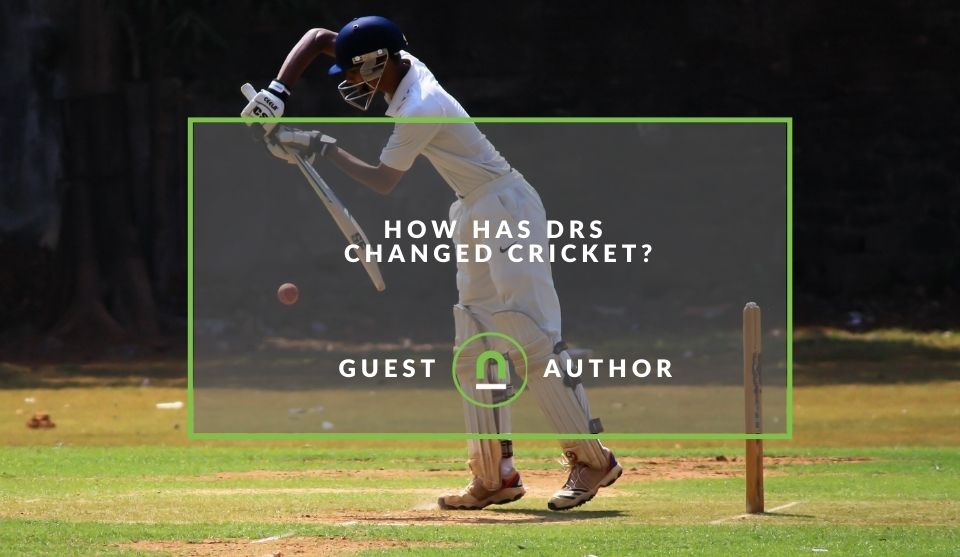Recent posts

nichemarket Advice
Why Video Production Companies Still Outshine AI
24 December 2025

Press Releases
Where You Can Find International Remote Jobs For South Africans
23 December 2025

Money Talks
Why Cross-Border Payments Are Slow, Tedious, and Expensive
17 December 2025

Money Talks
The Rise Of Trading Platforms In South Africa
16 December 2025
Popular posts
Extravaganza
Trending Music Hashtags To Get Your Posts Noticed
24 August 2018
Geek Chic
How To Fix iPhone/iPad Only Charging In Certain Positions
05 July 2020
Extravaganza
Trending Wedding Hashtags To Get Your Posts Noticed
18 September 2018
Money Talks
How To Find Coupons & Vouchers Online In South Africa
28 March 2019
How Has DRS Changed Cricket?
30 May 2022 | 0 comments | Posted by Mary Cole in Athletes
Cricket is an age-old game enjoyed by millions of people around the world. What started out as a friendly pastime has turned into a professional sport played on the school, provincial and international levels in various countries. There are several cricket tournaments to look forward to each year or every few years, but none as appealing as the cricket world cup, where the world's best players represent their nation in a tournament to see who is the world's best cricketing nation.
Crickets start, and the rules of the game
In 1744, the Star and Garter Club developed the first Laws of Cricket, the members of which later founded the famous Marylebone Cricket Club. The club immediately became the "keeper of the law" and retained this role. According to the game's rules, the cricket team led by the captain consists of 11 players. One of them acts as a bowler. Its primary function is to throw the ball so that the batsman (the player with the bat) cannot hit it.
If the batsman bounces the ball, he gets points for his team. Also in the game are wicket goalkeepers - cricket goalkeepers. Their main goal is to protect the gate of their team. The moment the batsman bounces the ball, the position of the players on the field changes. One team runs after the ball to touch one of the gates. Two players from the other team earn points by moving from one gate to another on a clay track.
There are two teams on the field during the game. However, there are only two players on the rebounding team and all 11 on the serving team. The matches are staffed by two referees who monitor compliance with the rules, make all necessary decisions and report them to the markers - the accountants.
The players' main equipment is a leather ball and a wooden bat-shaped bat. A cricket field is called a pitch. This is a rectangular area 20 meters long and 3 meters wide. There are also gates on the field - three columns 71 centimetres high. They act as gates.
Modern cricket
There is currently an International Cricket Council, which includes more than a hundred countries. For most of the countries of the former British Empire, cricket remains the main sport, particularly in the Indian subcontinent. Cricket is still evolving. This is how new forms of the game appear, such as Cricket - Twenty20.
The duration of a match in this format is determined not by the time limit but by the set number of innings. The game has also evolved technically. A special ball tracking program, infrared cameras and field edge control technology have been introduced to better see if a hit ball has hit.
As cricket became a global phenomenon watched by millions, umpires' decisions came under more scrutiny. Instead of only having players and fans in the stadium to critique their decisions, you now have a global audience during every movement ball.
To mitigate umpire errors, cricket boards and governing bodies have embraced technology and data to help enforce the rules of the game.
The introduction of DRS into cricket
The Decision Review System (DRS), formerly known as the Umpire Decision Review System (UDRS), is a technology-based system used in cricket to assist match officials in their decision-making. DRS was added to cricket to allow on-field umpires to refer some decisions to the third umpire, who would use TV replays to make decisions, which had been running since 1992.
The DRS consists of several review systems:
- Video replays: These replay systems are used, including slow motion used for a host of decision making by a third umpire.
- Hawk-Eye: or Virtual Eye (also known as Eagle Eye): ball-tracking technology that plots the trajectory of a bowling delivery that has been interrupted by the batter, often by the pad, and can predict whether it would have hit the stumps.
- Real-Time Snicko (RTS) or Ultra-Edge (Hawk-Eye Innovations): Is a directional microphone used to detect small sounds made as the ball hits the bat or pad, used for LBW and caught behind decision making.
- Hot Spot: Infra-red imaging system that shows where the ball has been in contact with bat or pad used for LBW and caught behind decision making.
What you need to know about DRS
The world of cricket has been transformed by the introduction of the Decision Review System (DRS), a technology-based system that aids umpires in their decisions.
Prior to DRS, umpiring errors were common, and there was no recourse for teams when they felt that an incorrect decision had been made. With DRS, teams can now challenge umpires' decisions with the help of technology. This has led to a more fair and accurate game, as well as increased transparency around umpiring decisions.
DRS has been credited with reducing the number of incorrect decisions made by umpires and making the game fairer overall. It has also led to a more transparent game, with players and fans alike understanding better where the line is between a good or bad decision. This has increased trust in umpires, who are now seen as fair and unbiased.
DRS has also led to an improvement in the technology used by the umpires. With DRS, there is a greater need for accurate and up-to-date technology, which has led to umpires using better quality equipment. This has, in turn, led to more accurate decisions being made and a higher standard of officiating overall.
The introduction of DRS has been a positive step forward for cricket and has had a positive impact on the game. It has improved the fairness of the game and made umpires more accountable for their decisions while also driving technological improvements in cricket. This makes DRS a worthwhile system to have in place.
DRS has not only changed the game of cricket but also how people wager on the decisions and outcomes during matches or on the end result.
Tell us your story
Would you like to write for nichemarket just like Mary has? Find out how to submit a guest post and when you're ready, you can contact us.
Are you looking to promote your business?
South African sport-related businesses can create your free business listing on nichemarket. The more information you provide about your business, the easier it will be for your customers to find you online.
Registering with nichemarket is easy; all you will need to do is head over to our sign up form and follow the instructions. If you require a more detailed guide on how to create your profile or your listing, then we highly recommend you check out the following articles.
Recommended reading
If you enjoyed this post and have time to spare why not check out these related posts and dive deeper down the rabbit hole that is sports and fitness
- Get Your Fitness & Wellbeing Related Business Listed Online
- GoPro: capturing your adventures on the go
- When Should You Be Replacing Your Running Shoes?
- 8 Fitness Apps to Help You Get in Shape Fast
- Fitness Apps That Pay You In Cryptocurrency
- 6 Considerations Before Starting A Home Gym
- Habits That Hurt Your Workout
- How Exercise Reduces Stress and Anxiety
- 6 Major High-Intensity Interval Training Mistakes You Are Making
Tags: Cricket, Sport, Guest Post
You might also like
The Rise Of Trading Platforms In South Africa
16 December 2025
Posted by Gabriela Pelayes in Money Talks
Discover how the rise of digital trading platforms in South Africa is reshaping commodity markets, boosting accessibility, efficiency, and the future...
Read moreWhy Video Production Companies Still Outshine AI
24 December 2025
Posted by Che Kohler in nichemarket Advice
A review of traditional video production versus generative AI videos and why businesses might be tempted to go the cheaper route, but it might cost y...
Read more{{comment.sUserName}}
{{comment.iDayLastEdit}} day ago
{{comment.iDayLastEdit}} days ago
 {{blogcategory.sCategoryName}}
{{blogcategory.sCategoryName}}
